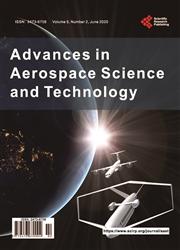A General Method to Compute the Electric Flux Lines between Two Magnet Wires in Close Contact and Its Application for the Evaluation of Partial Discharge Risks in the Slots of Electric Machines Embedded in Future Transportation Systems
引用次数: 1
Abstract
The sizing of the Electrical Insulation System (EIS) is an important challenge in electric motors of higher specific power driven by faster inverters. That keeps increasing the electric stress which the winding is submitted in the stator slot. Consequently, Partial Discharges (PD) are more likely to occur. Nowadays, the Paschen’s criterion is widely used to evaluate the risk of partial discharge. It requires the knowledge of electric field lines. This paper presents a method to precisely compute the electric field lines in a two-dimensional (2D) electrostatic problem. The field of study is composed of two magnet wires in close contact. Such configuration is representative of the turn-to-turn interaction in an electric motor slot. The problem is solved using the scalar potential formulation only. The notion of flux tubes is used for the post process of the electric field lines in a developed numerical code on Matlab. The developed method is compared to a ballistic method already included on Matlab. The work presented here is included in an automatic tool to suppress or reduce the partial discharge risk in a stator slot of high power density motor destined for future transportation systems.密切接触两磁线间电通量线的一般计算方法及其在未来交通系统中嵌入式电机槽部局部放电风险评估中的应用
在由更快的逆变器驱动的高比功率电动机中,电气绝缘系统(EIS)的尺寸是一个重要挑战。这使得绕组在定子槽内所承受的电应力不断增大。因此,局部放电(PD)更有可能发生。目前,Paschen准则被广泛用于评价局部放电风险。它需要电场线的知识。本文提出了一种精确计算二维静电问题中电场线的方法。研究领域是由两根紧密接触的磁铁线组成的。这种结构代表了电机槽中的匝间相互作用。该问题仅用标量势公式求解。利用磁通管的概念,在Matlab上编制了电场线后处理的数值程序。将所开发的方法与Matlab中已有的弹道方法进行了比较。本文介绍的工作包含在一种自动工具中,用于抑制或减少用于未来运输系统的高功率密度电机定子槽中的局部放电风险。
本文章由计算机程序翻译,如有差异,请以英文原文为准。
求助全文
约1分钟内获得全文
求助全文

 求助内容:
求助内容: 应助结果提醒方式:
应助结果提醒方式:


